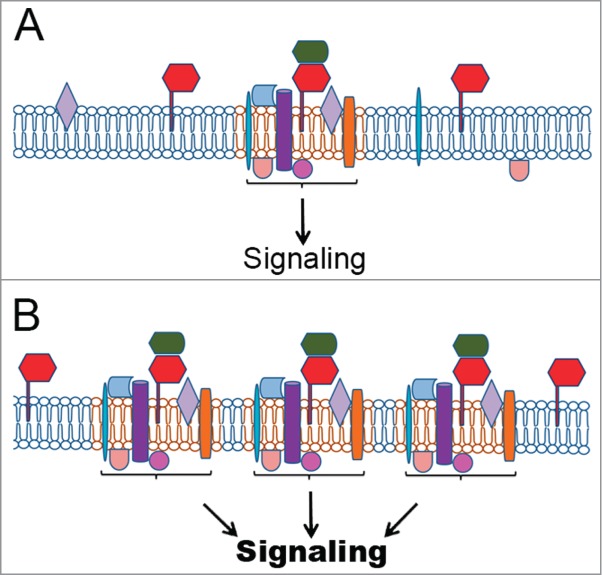Figure 1.

PrPC in signaling platforms and their regulation. (A) PrPC (red) interaction with a prime soluble ligand (green) modulates a group of multiple partners at the plasma membrane, organizing signaling platforms that regulate specific cellular functions. Other PrPC partners include integral transmembrane proteins (purple, blue or orange) or peripheral membrane proteins, including cytoplasmic (beige or rose) or proteins attached to outer leaflet of the plasma membrane (light blue or light purple). Importantly, the prime ligand can be a membrane protein in the same domain of PrPC localization (cis), in the membrane of another cell (trans), or on an extracellular vesicle surface. (B) The upregulation of PrPC allows the formation of additional tissue-specific complexes with the ability to regulate events associated to tumorigenesis. (C) Higher levels of the prime ligand can also improve the number of PrPC molecules able to organize signaling platforms, thereby inducing cancer processes. (D) Conversely, PrPC downregulation or silencing disorganizes these complexes, impairing PrPC-mediated signaling and, consequently, the tumoral process. (E) The inhibition of PrPC interaction with the prime ligand impairs the organization of these platforms and serves as a target for cancer therapy, potentially with fewer side effects.

